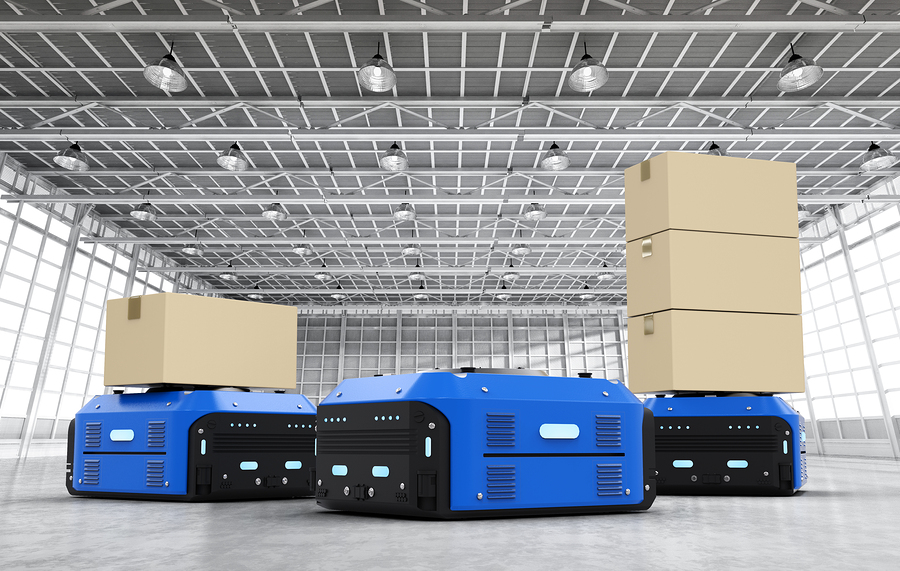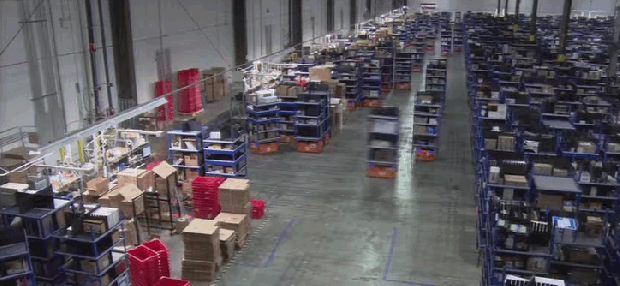In our previous blog on in-house robotic transportation, we took a close look at how quickly manufacturers are implementing automation and how they’re applying it to pallet handling. Here in part two, we’ll look beyond pallets at moving raw materials and finished products within manufacturing plants and how it can benefit manufacturers who invest in transportation automation.
Product movement
Here are some effective ways in which robotics can help streamline the movement of heavy and bulky objects or products from one area to another within a large manufacturing facility:
- Automated guided vehicles (AVGs) — AVGs eliminate the need for and cost of hiring human drivers as they can autonomously pull or carry heavy or bulky loads, quickly transporting products to where manufacturers need them.
- Conveyor belts — Conveyor belts are a cost-effective way to move items quickly from one point to another in a facility, such as over or through an assembly line. A conveyor belt system may include features like photoelectric sensors, which help track and route batches of products or other items.
- Shuttle systems — These vehicles provide added agility and speed in the automated transportation of goods or raw materials for production or assembly. Additionally, the option to deploy an underground or overhead shuttle rail system can free up critical space in industrial facilities.

Industrial robotics benefit manufacturers
Manufacturing process automation enables manufacturers to produce higher-quality products. Leveraging advanced robotics also helps enhance productivity and minimize operational costs. Likewise, automated production processes require less human intervention, translating into safer working conditions.
Additionally, the use of robots in manufacturing transportation leads to the emergence of more attractive employment opportunities, rather than job loss. For example, companies like Amazon have expanded their human workforces tremendously — despite their increased use of robotics.
However, manufacturers need methods for testing the reliability and safety of their automated systems to reap the expected benefits in full. Fortunately, integrating the industrial internet of things (IIoT) with automated manufacturing can help provide quality assurances. In that case, there’s a system in place to remotely track and send data regarding the status of specific manufacturing equipment and parts.
When manufacturers acquire the IIoT capabilities to capture and consolidate vast chunks of data regarding their production processes in real time, they can troubleshoot problems faster and minimize operational downtime. The ability to monitor the performance of different units also helps them optimize and save costs.
